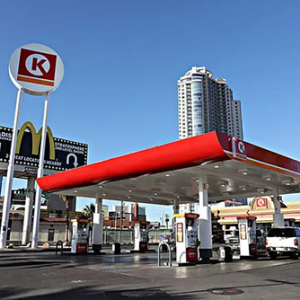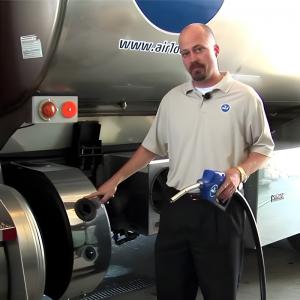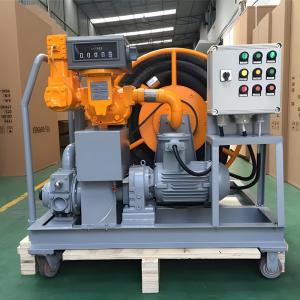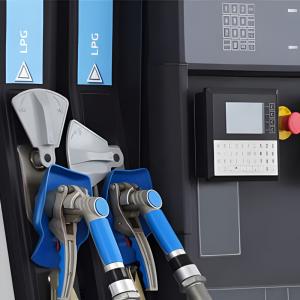Why You Can't Mix DEF Filter and Diesel Fuel Filter?
They are specifically designed to handle two entirely different liquids and operate in vastly different system environments. Using one in place of the other will lead to severe problems and costly repairs
DEF Filter vs. Diesel Fuel Filter: A Detailed Look at Function, Materials, and Critical Importance
In the intricate world of modern diesel vehicles and heavy machinery, seemingly minor components play monumental roles. Among these, filters stand out as indispensable guardians. Yet, a common point of confusion arises when distinguishing between a Diesel Fuel Filter and a DEF Filter (Diesel Exhaust Fluid Filter). While both bear the "filter" designation and are crucial for operational health, their targeted substances, specific functions, and fundamental material compositions differ significantly. Understanding these distinctions isn't just a matter of technicality; it's vital for proper maintenance, ensuring regulatory compliance, and protecting substantial investments in diesel technology.

1. The Diesel Fuel Filter: Guardian of the Engine's Core
The Diesel Fuel Filter is the unsung hero of the engine's combustion system. Its primary mission is to meticulously clean the diesel fuel before it reaches the highly sensitive components within the engine.
Primary Function & Why It's Vital
At its core, the Diesel Fuel Filter protects the engine's most expensive and precision-engineered fuel system components: the high-pressure Fuel pump, fuel injectors, and the common rail system. Modern diesel engines operate at incredibly high pressures (upwards of 30,000 PSI in common rail systems) and with extremely tight tolerances. Even microscopic particles, rust, dirt, or—critically—water present in the diesel fuel can wreak havoc. These contaminants cause:
-
Abrasion: Tiny particles act like sandpaper, wearing down precision-machined parts.
-
Cavitation: Water vaporizing under high pressure can cause pitting and erosion.
-
Clogging: Fine particulate matter can block the minuscule orifices of fuel injectors, leading to improper spray patterns, incomplete combustion, and reduced power.
Without an effective Diesel Fuel Filter, fuel system components would quickly fail, leading to significant repair costs and prolonged downtime. It’s the first line of defense against the impurities that inevitably find their way into fuel tanks.
Types of Diesel Fuel Filters
Diesel fuel filtration often involves a multi-stage process to ensure comprehensive protection:
-
Primary Filter / Fuel-Water Separator: This is typically the first filter in the fuel line after the tank. Its main purpose is coarse filtration (removing larger particulates) and, most importantly, separating water from the diesel fuel. Water can exist in two forms:
-
Free Water: Visible droplets that settle at the bottom of the fuel tank.
-
Emulsified Water: Tiny water particles dispersed throughout the fuel, forming a stable mixture. Fuel-water separators use hydrophobic filter media or coalescing elements to cause emulsified water droplets to combine and fall out of suspension, collecting in a sump or bowl that can be drained. This is absolutely critical because water in the fuel can lead to severe corrosion and damage in high-pressure Fuel pumps and injectors.
-
-
Secondary / Fine Filter: Positioned downstream from the primary filter, this filter provides much finer filtration, often down to 2-5 microns. Its role is to capture the smallest contaminants that might have passed through the primary filter, ensuring the fuel is ultra-clean before reaching the injectors. This extreme cleanliness is essential for the longevity and precise operation of common rail injectors, which have incredibly small orifices.
Filter Media & Construction Details
The effectiveness of a Diesel Fuel Filter largely depends on its filter media and construction:
-
Filter Media: Commonly made from specialized cellulose paper, synthetic fibers (like polyester or fiberglass), or advanced composite materials. Modern filters often employ multi-layer media, where different layers have varying porosities to capture contaminants incrementally, extending filter life and maintaining efficiency. The micron rating of a filter indicates the smallest particle size it can capture.
-
Design: The media is typically pleated to maximize surface area within a compact housing, increasing dirt-holding capacity.
-
Housing: Usually constructed from robust metals (steel or aluminum) to withstand fuel pressure, engine vibrations, and the varying temperatures encountered within the engine compartment. Some designs also feature transparent bowls for visual inspection of water accumulation.
-
Seals: Made from fuel-resistant elastomers (e.g., nitrile rubber) to prevent any fuel leaks.
Location, Operating Environment, and Consequences of Neglect
Diesel Fuel Filters are strategically placed within the fuel line, typically between the fuel tank and the engine's fuel delivery system. They operate under variable fuel pressure and are exposed to temperatures that can range from ambient to those heated by the engine or fuel return lines.
Consequences of Neglect: Failing to replace the Diesel Fuel Filter on schedule can lead to:
-
Significant Engine Performance Issues: Power loss, sluggish acceleration, rough idling, misfires, hard starting, and increased exhaust emissions dueating to improper combustion. This can also negatively impact Diesel Particulate Filter (DPF) regeneration.
-
Severe Component Damage: The most dire consequence is the failure of the high-pressure fuel pump and injectors. These components are extremely expensive to replace (often thousands to tens of thousands of dollars). Contaminants can cause rapid wear, seizure, or irreversible clogging.
-
Reduced Fuel Efficiency: Clogged filters restrict fuel flow, forcing the pump to work harder, which can indirectly increase fuel consumption.
-
Shortened Engine Life: Contaminated fuel contributes to overall engine wear and can necessitate earlier major overhauls.
2. The DEF Filter: Protector of the Emission System's Integrity
While the Diesel Fuel Filter guards the engine's core, the DEF Filter is the silent sentinel of the emission control system, specifically the SCR (Selective Catalytic Reduction) system.
Primary Function & Why It's Vital
The DEF Filter ensures the ultra-purity of the DEF solution before it reaches the delicate components of the SCR system. Even minute impurities or urea crystals can cause catastrophic damage within the SCR's precise dosing unit, the DEF injector/nozzle, or foul the catalyst itself. Its role is to protect:
-
DEF Dosing Unit/Pump: These units are responsible for precisely measuring and injecting DEF into the exhaust stream. Fine particles can wear out pump components or clog tiny passages.
-
DEF Injector/Nozzle: The nozzle features very small orifices designed to atomize DEF into a fine mist. Contaminants will quickly clog these, leading to improper spray patterns or complete failure to inject DEF.
-
SCR Catalyst: Contaminants can foul or "poison" the catalyst material, reducing its effectiveness at converting NOx and potentially requiring costly replacement.
Unique Challenges of DEF and Material Specifics
DEF presents unique challenges that dictate the specialized design and materials of the DEF Filter:
-
Purity Requirements: DEF must adhere to the ISO 22241 standard, which dictates its purity. Any deviation, often caused by contamination during storage or transfer, can lead to the formation of urea crystals (e.g., biuret) or other precipitates that directly attack the SCR system. The filter acts as the last barrier against these.
-
Corrosivity: DEF is corrosive to common metals like aluminum, copper, brass, and carbon steel. Using incompatible materials will lead to:
-
Filter Degradation: The filter itself corrodes and fails.
-
DEF Contamination: Corroded materials leach into the DEF, contaminating it and damaging the SCR system. Therefore, DEF Filters are built with highly corrosion-resistant and chemically inert materials.
-
-
Temperature Sensitivity: DEF freezes at approximately -11°C (12°F) and can decompose at sustained temperatures above 30°C (86°F). While the filter itself isn't a temperature regulator, it must be robust enough to withstand freeze-thaw cycles and potentially heated DEF without degrading. It must also effectively capture any micro-crystals that might form during temperature fluctuations.
Filter Media & Construction Details
The construction of a DEF Filter is fundamentally different from a fuel filter due to DEF's characteristics:
-
Filter Media: Typically consists of fine stainless steel mesh or specially designed plastic fibers (e.g., polypropylene, PTFE). These materials are chosen for their exceptional chemical inertness and resistance to urea. The filtration levels are often very fine, sometimes down to a few microns, to protect the very small orifices of the DEF injector.
-
Housing: Almost exclusively made from high-grade, DEF-compatible plastics (like polypropylene, HDPE) or stainless steel. These materials prevent any reaction with the DEF and ensure the filter's structural integrity over time.
-
Seals: Made from EPDM (Ethylene Propylene Diene Monomer) rubber, which is highly resistant to DEF and remains flexible across a wide temperature range. Other elastomers common in fuel systems would quickly degrade.
-
Design Considerations: Some DEF filters are designed to be part of a sealed system, preventing air ingress which can introduce airborne contaminants or cause water evaporation leading to increased urea concentration.
Location, Operating Environment, and Consequences of Neglect
DEF Filters are typically located within the DEF tank module itself, integrated into the DEF pump module, or positioned along the DEF delivery line, often close to the DEF dosing unit or injector. They operate within the DEF solution and are not exposed to the high pressures or extreme heat directly associated with the engine's combustion. However, the DEF system often incorporates heating elements to prevent DEF crystallization in cold weather, which the filter must also be able to endure without damage.
Consequences of Neglect: Neglecting the DEF Filter can lead to:
-
Emissions Violations: The most immediate consequence is that the vehicle will fail to meet NOx emission standards, potentially leading to fines or legal issues.
-
System Derate / Limp Mode: Modern vehicles are programmed to detect SCR system malfunctions. If the DEF flow or quality is compromised by a clogged filter, the engine's power output may be severely limited (derated) or enter a "limp mode" to force the driver to address the issue.
-
Costly Component Damage: Clogged filters can cause the DEF transfer pump to overwork and fail. More critically, they lead to clogging of the DEF nozzle or injector, requiring expensive replacement. The SCR catalyst itself can become fouled or permanently damaged, which is one of the most expensive components in the emission system.
-
Increased DEF Consumption (Indirectly): While a clogged filter doesn't make the engine use more DEF, an inefficient SCR system (due to a clogged filter) might not properly reduce NOx, prompting the engine's control unit to try and compensate, potentially leading to increased consumption or, more likely, system faults.
3. Key Distinctions and Why It Matters
| Feature | Diesel Fuel Filter | DEF Filter (AdBlue Filter) |
| Target Fluid | Diesel Fuel (hydrocarbon) | Diesel Exhaust Fluid (DEF) / AdBlue (urea-water solution) |
| Primary Goal | Protect engine fuel system (pump, injectors) | Protect emission (SCR) system (dosing unit, nozzle, catalyst) |
| Key Threat | Particulates, water (critical), biological growth | Particulates, urea crystals, chemical contamination |
| Filter Media | Cellulose, synthetic fibers, composites | Stainless steel mesh, specific plastics (polypropylene, PTFE) |
| Housing Material | Metal (steel, aluminum), robust plastics | DEF-compatible plastics (HDPE, polypropylene), stainless steel |
| Seal Material | Nitrile rubber (fuel resistant) | EPDM rubber (DEF resistant) |
| Typical Location | Between fuel tank & engine fuel system | Within DEF tank, pump module, or delivery line |
| Consequences of Failure | Engine damage, power loss, high repair costs | Emissions non-compliance, engine derate, SCR system damage, high repair costs |
| Maintenance Frequency | Generally more frequent (based on fuel quality/mileage) | Generally less frequent, but critical when due (based on DEF quality/usage) |
These distinctions underscore that while both filters are indispensable, they are engineered for fundamentally different chemical environments and protection goals. Neglecting either can lead to significant operational disruptions and financial burdens.





